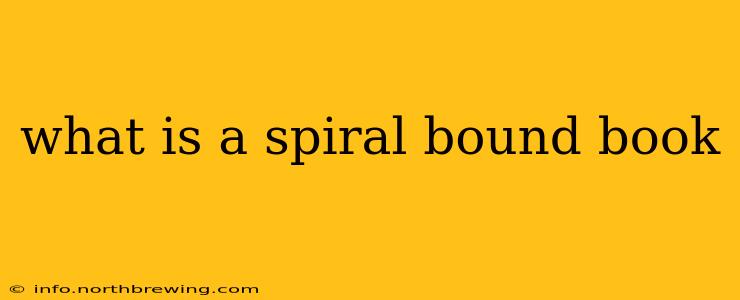What is a Spiral Bound Book?
A spiral bound book, also known as a coil bound book or wire-o bound book, is a type of bookbinding where pages are punched with holes down the spine and then secured together using a plastic or metal comb. This comb, often referred to as a coil, spiral, or wire-o, allows the book to lay completely flat, making it ideal for various applications. The simple yet effective design makes it a popular choice for many different purposes.
What are the different types of spiral binding?
While the basic principle remains the same, there are variations in the materials and methods used for spiral binding:
-
Plastic Coil Binding: This is the most common type, using a plastic comb available in various colors. It's relatively inexpensive and durable, making it suitable for many everyday uses.
-
Metal Coil Binding: Metal coils, typically made of wire, offer a more professional and durable finish. They are often preferred for high-use books or those requiring a more premium look and feel. However, they are generally more expensive than plastic coils.
-
Wire-O Binding (Double-Loop Wire Binding): This method uses a double-loop wire, creating a more sophisticated and professional appearance. Wire-O binding is exceptionally durable and allows for a smoother, more professional feel. It is often used for high-quality products like calendars or notebooks.
What are the advantages of spiral binding?
Spiral bound books offer several key advantages:
-
Lay-Flat Design: This is arguably the biggest advantage. The book lies completely flat, making it easy to write or draw in, ideal for notebooks, calendars, and sketchbooks.
-
Cost-Effective: Compared to other binding methods like perfect binding or case binding, spiral binding is generally more affordable, especially for smaller runs.
-
Durability: While the durability depends on the type of coil used, both plastic and metal coils offer reasonable durability for everyday use.
-
Easy to Turn Pages: The coil allows for easy page turning and prevents pages from getting damaged or torn easily.
-
Versatile: Spiral binding is suitable for a wide range of applications, from simple notebooks and photo albums to more complex documents and presentations.
What are the disadvantages of spiral binding?
While spiral binding has many advantages, it also has some drawbacks:
-
Limited Page Capacity: Spiral binding is generally not suitable for very thick books, as the coil can become cumbersome and prone to breakage.
-
Spine Exposure: The coil is exposed on the spine, making the book more vulnerable to damage if dropped or mishandled.
-
Coil Can Catch: The coil can occasionally snag on clothing or other items.
What are spiral bound books used for?
The versatility of spiral bound books makes them suitable for a wide variety of uses including:
-
Notebooks and Journals: Their lay-flat design makes them perfect for note-taking and journaling.
-
Calendars: The ability to lay the book flat makes it easier to see multiple months at once.
-
Recipe Books: The lay-flat design prevents the book from closing unexpectedly while cooking.
-
Workbooks and Manuals: Often used for training manuals and educational materials where writing is required.
-
Photo Albums: The flexibility allows for easy viewing of photographs.
-
Presentations: Spiral bound books can be easily used as a presentation aid.
How is a spiral bound book made?
The process typically involves:
-
Page Preparation: The pages are printed and collated in the correct order.
-
Punching: Holes are punched along the spine of the document using a specialized machine.
-
Coil Insertion: The plastic or metal coil is inserted into the punched holes.
-
Crimping: The ends of the coil are crimped to secure the pages.
In conclusion, spiral bound books are a practical and versatile binding option offering a balance between cost-effectiveness, durability, and ease of use. Understanding their strengths and weaknesses allows you to determine if they are the right choice for your specific needs.
